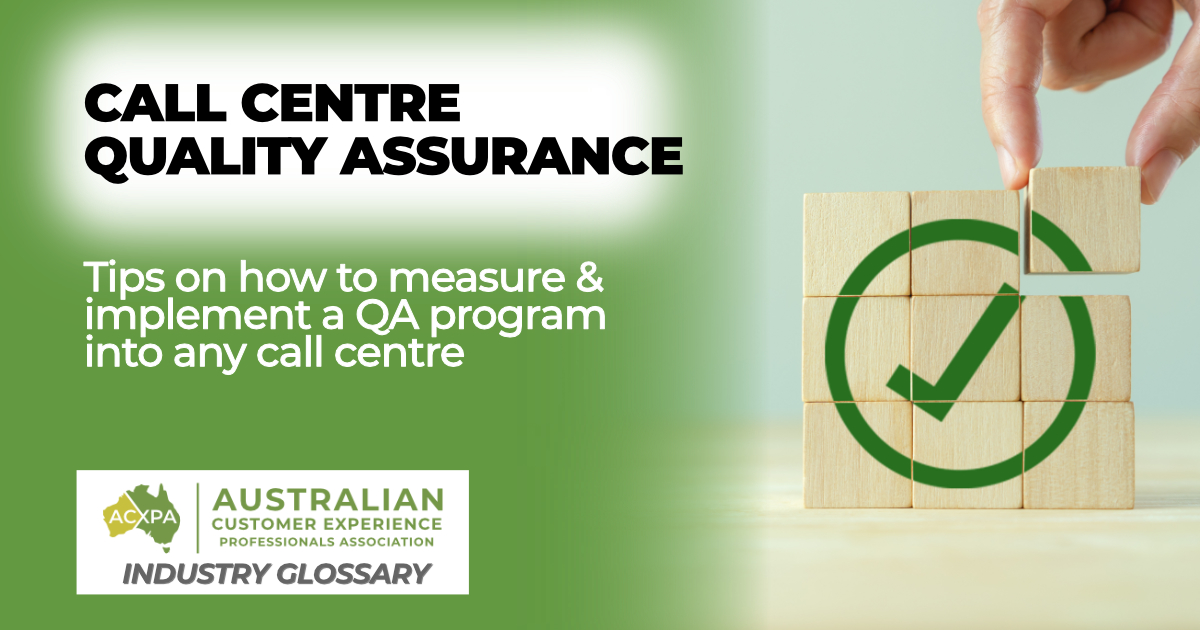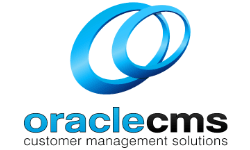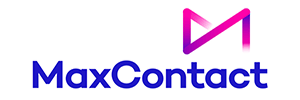Call Centre Quality Assurance
If there is an area in call centre management that is often overlooked or misunderstood, it’s Call Centre Quality Assurance.
Most call centre quality assurance programs that exist seem to be more of a compliance checklist that can consist of things like:
- Did the agent use the correct greeting – Yes/No
- Did the agent complete the ID check – Yes/No
- Did the agent advise the customer they were going to place them on hold – Yes/No
They are binary in nature, the agent either did it or they didn’t. Black or White.
What you end up with at the end is scores like 98.9%.
However, the ultimate test for any call centre quality assurance program is pretty simple.
If you have a score that is in the high 90% range, would you be comfortable enough to take a recording of that call without checking it first, and play it to the company board as a demonstration of how great your call centre is?
I dare say the answer to that for most people is “oh hell no!”
But at its core, that’s what a good call cenre quality assurance program should enable.
High scores should, and must, equal the experience you want to have for your customers.
10 Key Tips for Implementing a Call Centre Quality Assurance Program
1. Define your quality expectations
The most important step, and the one most call centres fail, is actually defining what great quality means in your call centre.
Great quality shouldn’t be left up to chance or interpretation.
Let’s take the welcome greeting as an example.
Here are a few options:
- ‘Welcome to <insert company> this is Justin>?
- “Hi and thanks for calling <insert company> Justin speaking.”.
- You’ve called <insert company”, my name is Justin and how may I assist you today?
- Yo dude, it’s Justin and how can I rock your world today?
Which one is correct for your business?
Or perhaps you don’t even want a standard greeting because it will make everyone sound like a robot?
Maybe it’s as simple as you want to ensure the agent mentions the company name and their name and you leave the rest up to them to reflect their own individuality.
There is no right or wrong at an industry-standard level.
What matters is that your staff understand which one(s) they are expected to do and your call centre quality assurance program reflects that in the scoring.
All elements of a call should be defined so your agents know what great is supposed to sound like.
2. Measure what matters
It can be easy to come up with a hundred different ways to measure quality which ultimately will be difficult to measure or understand.
Choose the things that matter to your business.
Typically, a call centre quality assurance program would incorporate two key metrics:
Compliance
Things that MUST happen on every call.
Examples might be completing an ID Verification, pausing recording for PCI-DSS compliance, providing a reference number etc.
It doesn’t matter if it’s the agent’s first day or they’ve been there ten years, these things must happen on every call and they either did it, or they didn’t – there is no grey area.
Quality
Quality metrics allow for some room for individuality, flare and performance.
Take rapport building for example.
At a simple level, it might be asking a customer how their day is going.
But taking it to the next level might be then asking a following up question, using some of that information throughout the call, sharing some personal insights etc.
The point is with quality metrics there is room for variable performance.
3. Determine the Scoring Methodology
Once you have defined your call centre quality assurance metrics, you need to work out how to score them.
Common methodologies include:
- A scale of 0 to 10
- Below acceptable, Needs Improvement, Meets, Exceeds & Outstanding
- Below Standard, At Standard, Above Standard
In my experience, keeping the scale with fewer options tends to be easier to score – arguing over whether a score should be an 8 or a 9 is a waste of energy.
The other thing to consider is how to score the Compliance Metrics.
Yes, they are binary; there is only a yes or no result.
However, some compliance metrics may carry more weight than others.
If you use ID verification as a compliance metric and the agent fails to do it, that could have very serious consequences for your organisation. It may result in an automatic fail on the call regardless of the other results, a 50% penalty, etc.
But if they failed to mention their name, and that was a compliance metric, it may not carry the same weight as failing to complete an ID check.
4. Calibration
Regardless of which scoring methodology you choose, it’s important that everyone is scoring consistently.
The first tip here is that the better the definitions are, the easier it will be to score.
Then, it’s about introducing this thing called calibration.
Being human, we can all interpret things differently and what is great quality for you, maybe well below quality for me.
Calibration is a process to ensure that everyone is scoring consistently before they are allowed to formally score calls.
In its simplest form, assemble the people that are going to be scoring the calls and give them all the scorecard.
Play the call and ask them all to score it.
Compare the scores.
Where there is a difference, discuss them as a group.
Tighten up the definitions if required.
I typically don’t assume people are calibrated until they can score within +/-10% of the group average for 5 consecutive calls.
5. Frequency
In a perfect quality assurance world, every single call would go through the quality assurance process.
Of course, that’s just not feasible or practical for any call centre.
You need to determine what’s best for your call centre, although my recommendation is to score no less than 5 calls per agent per month.
Now, with AI/Speech Analytics and automated QA software, it is possible to assess EVERY call an agent does.
But a word of caution.
In my opinion, currently, I don’t think it’s at a level that is sufficient.
It’s great for some compliance metrics, or to count how many times a customers name was used etc.
But it lacks context, an understanding of human emotion, rapport building, inflections and so on.
So it’s great as a supplement to QA, but I don’t think it should replace a robust, human-checked Quality Assurance process.
If you’re struggling with having the resources to manually score/assess calls, consider outsourcing some of your quality assessments such as the one we offer >
6. Transparency
If you are using a call centre quality assurance program to catch out to call centre agents for performance management reasons, you probably need to change your career.
As call centre managers, your job is to improve the performance of your employees, and one of the best ways to do that is to be transparent about what you expect.
Your call centre quality assurance program should be entirely transparent for your employees – you WANT them to get 100%.
So, be clear about the expectations and requirements to achieve 100%.
Best-practice call centres will have their quality assurance scorecards, definitions, etc, available for all agents to view.
If someone on your team is struggling in a particular area, your role is to coach and train them to improve.
7. Link to Training
As I alluded to above, if your employees are failing in a particular area then you need to help them improve.
An easy example is let’s assume someone is getting a poor result in compliance.
Very rarely is it because they don’t actually care.
It’s normally because they don’t quite understand the requirements.
So make sure for whatever call centre quality assurance metric you decide to use, that there is a quality guide/training module that is linked to each metric to provide additional training/insights to the agents as needed.
We also offer a range of courses for frontline employees on best-practice call centre quality as well as courses for team leaders on how to coach effectively as well a specific course on how to design a QA framework for call centres.
8. Use Technology
You will need some technology to assist you in effectively implementing a call centre quality assurance program.
- Call recording software. Most call centre technology platforms will include the option to record calls. If not, search call centre technology platforms that include call recording >
- QA Scorecards (it can be a simple as a Word document or dedicated software programs). Some call centre technology platforms now have scorecards built in which can make things bit easier as they are attached the call recording and the specific agent. Search suppliers with built-in QA assessment tools >
- Dashboard and Reporting (at an individual level, team level and centre level)
- Speech Analytics – not required, but a great way of analysing more calls. Search suppliers of Speech Analytics >
9. Link to Rewards & Recognition
Providing a great customer experience should be the objective in your call centre.
If your call centre agents are providing a consistently exceptional level of service, be sure to reward them for going the extra mile.
It doesn’t need to be anything fancy, or you can offer up a world trip for the top scorer of the year.
Whatever it is though, again, be clear and transparent with your staff on the rewards and recognition available for when they do go above and beyond.
10. Outsource your QA
There are a number of benefits to outsourcing your call centre quality assurance to a third party.
We’ve listed 7 key benefits of outsourcing your call quality assessment that you can read, however, the primary reasons call centres look to outsource their call quality assessments are:
- An independent, unbiased and objective evaluation.
- To supplement their internal program (a balance of internal and external assessment).
- They don’t have the resources or skills to do it internally.
You can learn more about the ACXPA Call Quality Assessment service here >
- About the Author
- Latest Articles
After spending over 30 years working in contact centres and CX, one thing I’ve learnt is there is always something more to learn!
I’m thrilled to be the inaugural CEO of ACXPA, and together with the rest of the team, we’re focused on helping Australian businesses deliver efficient and effective customer experiences via phone, digital and in-person by empowering their employees with the skills, industry insights and professional support networks they need to succeed.



























